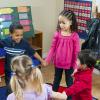- Explore examples of how you can embed opportunities for social-emotional learning and development in preschool classrooms.
- Discuss how you can support the social-emotional skills of all preschoolers through experiences and activities.
- Learn how you can promote friendships among all children in your classroom.
Learn
Know
The preschoolers in your care need daily opportunities to participate in activities that help them learn new skills and practice existing skills in fun, stimulating, and supportive environments. As you learned in Lesson One, children develop social-emotional skills in the context of their relationships with their primary caregivers and families. You also learned that social-emotional development in young children is closely linked to the development of other skills and therefore, affects growth later in life. You should embed opportunities for social-emotional development in all areas of learning. This is essential for promoting social-emotional competence in young children.
Embedding Opportunities for Social-Emotional Development in Preschool
The first step in embedding opportunities for social-emotional development and learning is getting to know the children in your classroom. Through observations, checklists, and other measures, you can gather information about children’s social interactions with peers or adults. You can observe how and when they interact and how they express emotions throughout the day. Using this information, you can determine what is developmentally appropriate for the children in your classroom so you can provide appropriate models or needed support. This information will help you plan what, when, and how to embed opportunities for social-emotional learning.
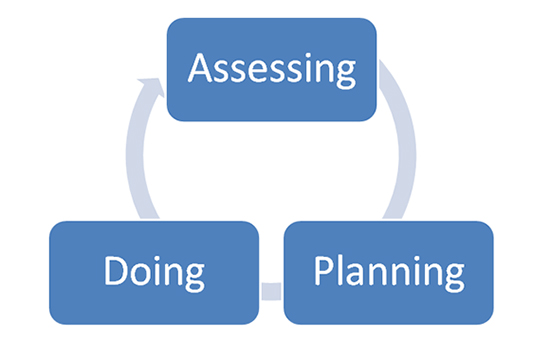
After you have gathered information about the social-emotional skills of the children in your classroom, you should use it to decide what experiences you want to provide, or teaching strategies you want to use. Consider the social-emotional needs of the children in your classroom and how you can intentionally build social-emotional learning opportunities into the daily routines, experiences, and activities taking place. In this lesson, you will find examples of planning and embedding opportunities for social-emotional development in daily preschool routines. You can arrange your classroom experiences and routines to ensure that you provide opportunities for social-emotional learning and growth throughout your day.
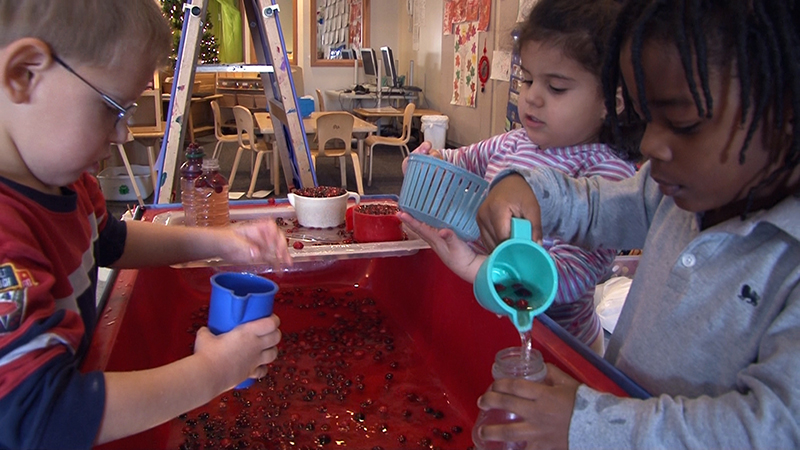
Once you have assessed and planned for social-emotional learning opportunities, the next step is implementing your plan. In doing so, build on experiences in which the children in your classroom are actively engaged. Examples of this may include:
- Asking children to turn to the person seated next to them at snack time and ask how they feel.
- Providing children with pictures or labeled cards and having them talk about their emotions with peers at their table.
- Asking children at circle time how they feel and then make charts or graphs depicting the classroom emotions for that day.
- Placing pictures of emotions around the circle time area and ask children to “find” an emotion.
With careful planning, you can adapt and embed communication strategies into multiple experiences and routines in your preschool classroom. You will need to continuously assess children’s progress and adapt your strategies to nurture their development as the children in your classroom learn new skills.
Social-Emotional Learning throughout the Day!
Addressing the Social-Emotional Needs of All Children in Preschool
Children in your classroom with disabilities or those who experience challenging life events or circumstances may also experience challenges with social-emotional skills. These challenges may affect the child’s ability to benefit from high-quality early education and to engage in positive social interactions with peers and adults. Even though challenging behaviors are typical for young children, some children show persistent challenging behaviors that may affect their overall school experience. It is important to provide children with the support they need so they can benefit as much as possible from their school experiences. Children with specific social-emotional needs may benefit from adaptations to the curriculum, environment, experiences, or routines to enable them to be successful. Think about busy centers or learning areas, large-group activities, transitions, lunch and snack time, potty time, free play, or other classroom and program events. How do you ensure that you address the needs of all children in your classroom during these times? You should work with children’s families to ensure consistency between school and home. Families may benefit from your classroom strategies that support children’s positive behaviors and you will benefit from their knowledge and expertise about their child.
Some children in your care may have conditions that affect their social-emotional development, including developmental delays, autism, neurological and perceptual disorders, or language and communication delays. Children with autism or other disabilities may be able to engage in routines, play and other social interactions that have verbal prompts and directions, but others will need visual supports, such as a visual schedule, to make activities, routines, or instructions understandable and meaningful.
Children with Individualized Education Programs (IEPs) have a specific plan to help them meet their education goals. Very often, these children will need changes or adaptations to curriculum, classroom environments, and daily preschool routines. You should meet with the child’s parents or caregivers to ensure you are supporting the child’s IEP goals within your curriculum plans.
For children who need support understanding social situations, events, or circumstances, you may consider using social stories or scripts. These are short stories that describe social activities or behaviors to support children in learning and using appropriate social skills. They can be written by family members or teachers and are specific to an individual child’s particular needs. Social stories and scripts may be used to support children with situations like sharing, waiting in line, playing at the park, participating during center time, using the bathroom, and getting on the bus. In the Learn section of this lesson, you will find additional information about writing scripted stories.
Another strategy teachers can implement is peer-mediated interventions, which involve teachers purposefully pairing children who have advanced social-emotional skills with children who are working to develop these skills. These strategies ensure that children have multiple opportunities to practice social skills during daily routines and activities. For example, you can pair children to support practice and learning of skills, such as sharing toys with a friend, reading a book with a friend, taking turns during games or activities, or responding to a friend’s request to play. When using these strategies, consider peer models who are socially competent, have good language and play skills, follow adult requests, are well-liked by other children, and like to take on leadership roles with peers. Peer models can support other children by responding to a peer’s request to play, helping a peer play with a game or activity, suggesting an idea for pretend play, prompting a peer to share a toy, prompting a peer to select a game or activity, or prompting a peer to take turns with an activity or toy.
Some children with autism or developmental disabilities will be able to engage in play and other social interactions that have verbal prompts and directions, but others will need visual supports, such as a visual schedule, to make activities, routines, or instructions understandable and meaningful. Other children in your care may face challenging life circumstances such as poverty, caregiver substance abuse, caregiver separation, illness, exposure to violence, abuse, neglect, or caregiver deployment. These children may also require unique types of social and emotional supports that will address their needs and help them build resilience in dealing with these stressful events. When working with children who face challenges and their families, it is important to acknowledge that sometimes these challenges have multiple causes and these children may require help beyond what you can provide at school. It is important to recognize that some challenges may require a wide range of services and you may be one of several professionals supporting a child and their family.
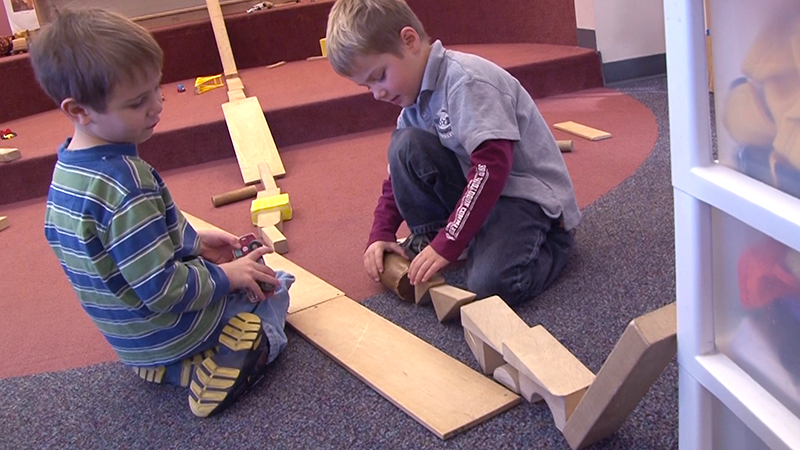
It is critical that you get to know the children in your classroom to be able to support their successful participation in your program experiences. Make sure all children and families feel welcome and involved. The Kids Included Together (KIT) program can be a valuable resource for ideas. You can also consider Building Blocks and Cara’s Kit. These resources from the Council for Exceptional Children Division for Early Childhood provide practical ways to help children succeed in their environments.
See
While it is important to provide many opportunities for children to develop their social-emotional skills, also consider that not all children learn social-emotional skills in the same way. As you watch the following video, think about how you might provide systematic opportunities for all children to grow and develop these important skills. The last video in this lesson discusses ways to promote friendships among all children.
Addressing the Social-Emotional Needs of All Children
Promoting Friendships among All Preschoolers
Friendship skills begin developing in young children and change over time. Friendships are important for learning social, cognitive, and communication skills, and for emotional regulation. When children play with friends, they display more positive attitudes, engage in more sophisticated play, and use more effective problem-solving strategies. During the preschool years, children learn important social skills through their interactions with friends that will affect their social-emotional competence. They observe their peers, play near their peers, talk with their peers, take turns and share with their peers, and ultimately cooperate with peers in games and pretend play. Consider the following strategies to promote friendship skills among children in your classroom:
- Include plenty of toys and materials that promote social interactions in interest areas (e.g., dress-up clothes, blocks, balls, puppets, cars and trucks).
- Arrange your classroom so there is enough space for two or more children to play side-by-side with similar toys.
- Read books about friends, cooperation, helping each other, emotions, and empathy.
- Practice sharing and taking turns, with adult support, during snack time, circle time, and other daily routines.
- Model and ask children to help or complement each other throughout the day.
- Make positive comments and praise children who are playing together, sharing toys, or taking turns.
- Include the shared interests of children in your classroom interest areas and help children take turns and play together.
- Model talking about your own emotions and support children who are talking about their own emotions.
- Make suggestions to small groups of children about play themes or what they can do during play.
- Include playground equipment and toys that involve children working together (e.g., tricycles for two children, large dump trucks or cars, wagons, sand toys).
- Place at least two of most toys in each center or activity to encourage children to play near each other with similar toys.
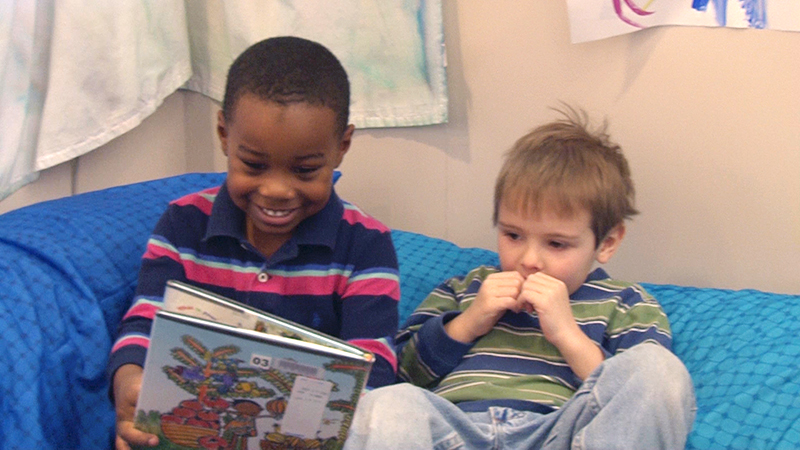
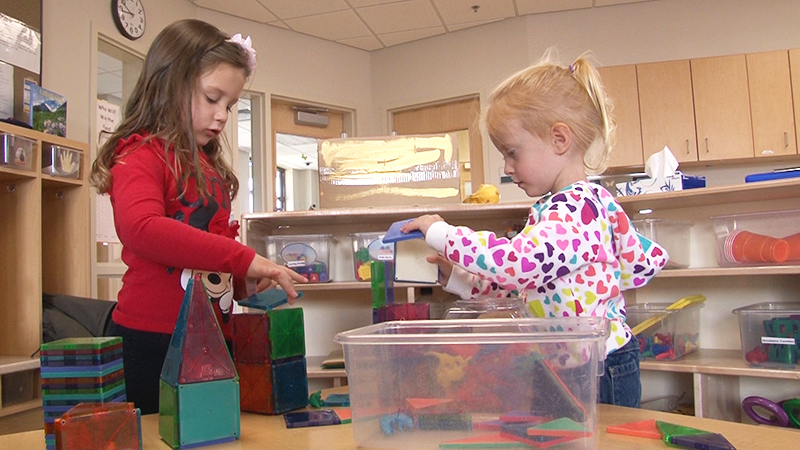
Research indicates that children with disabilities are less likely to develop friendships than their peers who are typically developing because they often have difficulties with peer interactions. If these children are not supported in social and friendship skills when they are young, they are at risk for social isolation, rejection, further social-emotional delays, and academic failure. As early childhood classrooms become increasingly inclusive, it is critical to create supportive environments that promote acceptance and tolerance for all children and their families. In the Apply section of this lesson, you will find a list of children’s books that promote acceptance and positive attitudes about children with disabilities. Consider including some of these books in your classroom and school library. You should also consider the following strategies and adaptations to address the needs of children with disabilities in your classroom and program:
- If a child is having a difficult time completing a task or activity, ask another child who has finished the task to help.
- Provide multiple opportunities for a child to practice using social skills and offer the child supports as needed.
- If a child is having more difficulty than his or her peers playing with toys or materials, take time to teach the child how to play with the toys or materials.
- Use visual props, large pictures, or other materials for children who are working on social skill development.
- Set up “buddy” activities, and prearrange so that two children are paired up and go to an activity or center together. Pair a more socially competent peer with a peer who is working on social skills or pair two children who are developing a friendship.
- Use “buddies” for children who may have a hard time with transitions or self-care routines (e.g., hand washing, getting dressed).
- Embed a child’s interests or preferences into social games or activities and support the child in taking turns, sharing, and talking to other children. When appropriate, use the child’s interests as reinforcement for play (e.g., “The balls are for two children to play with. Let’s ask a friend to play with you!”).
- Give children frequent praise and encouragement for using appropriate social skills throughout the day.
- Give children classroom jobs or roles that involve social interactions (e.g., passing out props during circle time, passing out snacks or utensils during mealtimes, passing out name tags during arrival or collecting them at departure).
- If a child uses a daily visual schedule, embed social interactions by having an item on the schedule such as “Ask a peer to play” and support the child in asking a peer to play.
- Some children may need specific verbal cues (e.g., “Ask Thomas for the red truck”) or suggestions for play (e.g., “Ella, you can be the baby’s mommy and Maia, you can be the doctor”).
- Encourage family members to arrange play dates with other children from their classroom.
- Invite family members into your classroom or organize special family events to support and encourage friendships among families.
Promoting Friendships among All Preschoolers
Do
Children need daily opportunities to practice social-emotional skills. In your daily interactions with preschool-age children, consider the following:
- Be responsive to children’s attempts to use social skills or express emotions. Build on what they are saying or doing.
- Provide frequent, developmentally appropriate models through daily activities and routines.
- Follow children’s cues and preferences.
- Embed activities about emotions into daily routines. For example, during center time, have children play an activity with sorting, matching, or identifying emotions with friends or peers.
- Read books with themes that include sharing, compromising and listening to provide children with concrete knowledge about what it means to be a friend.
- Ask children questions about their feelings, actions, interests, or life events. Reinforce them for using emotion words, appropriately sharing emotions, or demonstrating appropriate social skills. Consider creating a reinforcement system where children can earn stickers, tokens, or points for labeling their own emotions.
- Provide puppets or stuffed animals to act out situations or events in which children were experiencing big emotions (e.g., feeling mad, sad or excited). Ask children how they think the puppets or stuffed animals are feeling. Talk about these emotions and ask children to practice using these emotions throughout the day.
- Identify times of day when a child, or group of children, seems to be experiencing big emotions. Create small books or simple stories with pictures about these times of the day using appropriate feeling words and responses.
- Assign partners for various activities, such as classroom chores, so children can get to know each other.
- Talk about what it means to be a friend. For example, ask, “What would a friend say to a friend who is crying?” Children could illustrate their ideas, and you may want to post them in your classroom.
- Share observations about emotions to help children understand how behavior affects others. (“Moxie, Joaquin feels happy because you asked him to play trucks with you.”)
- Use group activities to encourage friendships. Children need many opportunities to develop friendships and working as a group toward a common goal helps builds a sense of community.
- Tell families about some of the activities, experiences, or strategies you use in your classroom to help children practice social-emotional skills at home.
Explore
What are you currently doing to promote the social-emotional development of children in your classroom? In this section, you will find activities that will help you examine your current practice and provide ideas for experiences and activities that promote social-emotional development.
Read the scenario in the Social Scenario Activity and reflect on how you would support the child’s social-emotional development. Complete the Teaching Problem Solving activity by identifying ways that you can teach children problem-solving skills during various routines and activities. Lastly, use the Using Children’s Literature to Promote Social Emotional Development to learn how to use children’s books to support social-emotional development. Reflect on ways you can use other books in your classroom to promote children’s social-emotional development.
Share and discuss your responses with a trainer, coach, or administrator.
It is important to offer learning experiences and activities that are appropriate, engaging and supportive of children’s learning and development across various developmental domains including cognitive, social-emotional, physical, language and literacy, and creative development. Staff members working toward their CDA credential should use the CDA Social Skills Activity Plan handout to develop a social skills learning experience from your curriculum (or a new activity you plan on implementing).
Apply
Use the resources in this section to learn more about supporting children’s social-emotional development by using children’s literature, teaching problem solving skills, and using scripted stories. Additionally, the Involving Families in Children’s Social-Emotional Development handout provides a list of resources to help you include families in supporting their child’s social-emotional skills. For more resources and practical strategies, you can visit the Center on the Social and Emotional Foundations for Early Learning.
Glossary
Demonstrate
Berk, L. E. (2013). Child development (9th ed). Pearson.
Center on the Social and Emotional Foundations for Early Learning. Resources: Preschool training modules. http://csefel.vanderbilt.edu/resources/training_preschool.html
Coleman, J. C. et al. (2013). Preventing challenging behaviors in preschool: Effective strategies for classroom teachers. Young Exceptional Children, 16(3), 3-10.
Brown, W., Odom, S., McConnell, S. R., & Rathel, J. M. (2008). Peer interaction interventions for preschool children with developmental difficulties. In Brown, W., Odom, S. & McConnell, S. R. (Eds.). Social competence of young children: Risk, disability, and intervention, (2nd ed.). (141-165). Brookes Publishing Co.
Edwards, C. C., & Da Fonte, A. (2012). The 5-point plan: Fostering successful partnerships with families of students with disabilities. Teaching Exceptional Children, 44, 6-13.
Guralnick, M. J., Neville, B., Hammond, M. A., & Connor, R. T. (2007). The friendships of young children with developmental delays: A longitudinal analysis. Journal of Applied Developmental Psychology, 28, 64-79.
Hemmeter, M. L., Ostrosky, M. M., & Corso, R. M. (2012). Preventing and addressing challenging behavior: Common questions and practical strategies. Young Exceptional Children, 15(2), 32-46.
Jones, N. P. (2008). Grouping children to promote social and emotional development. Young Children, 63(3), 34-39.
Luckenbill, J. (2011). Circle Time Puppets: Teaching social skills. Teaching Young Children, 4(4), 9-11.
National Board for Professional Teaching Standards. (2012). Early childhood generalist standards for teachers of ages 3-8. (3rd ed.) National Board for Professional Teaching Standards.
Ostrosky, M. M., & Meadan, H. (2010). Helping children play and learn Together. Young Children, 65(1), 104-110.
Ostrosky, M. M., Mouzourou, C., Dorsey, E.A., Favazza, P.C., & Leboeuf, L.M. (2013). Pick a book, any book: Using children’s books to support positive attitudes towards peers with disabilities. Young Exceptional Children. doi: 10.1177/1096250613512666.
Ostrosky, M. M., & Sandall, S. R. (2013). Addressing young children’s challenging behaviors. The Division for Early Childhood of the Council for Exceptional Children.
Santos, R. M., & Ostrosky, M. M. Understanding the impact of language differences on classroom behavior. CSEFEL What Works Briefs. https://files.eric.ed.gov/fulltext/ED481990.pdf
Stanton-Chapman, T. L., & Hadden, D. S. (2011). Encouraging peer interactions in preschool classrooms: The role of the teacher. Young Exceptional Children, 14(1), 17-28.
Trawick-Smith, J. W. (2014). Early childhood development: A multicultural perspective, (6th ed). Pearson.
Trevarthen, C., J. Delafield-Butt, & A. Dunlop. (2018). The child’s curriculum: Working with the natural values of young children. Oxford University Press


